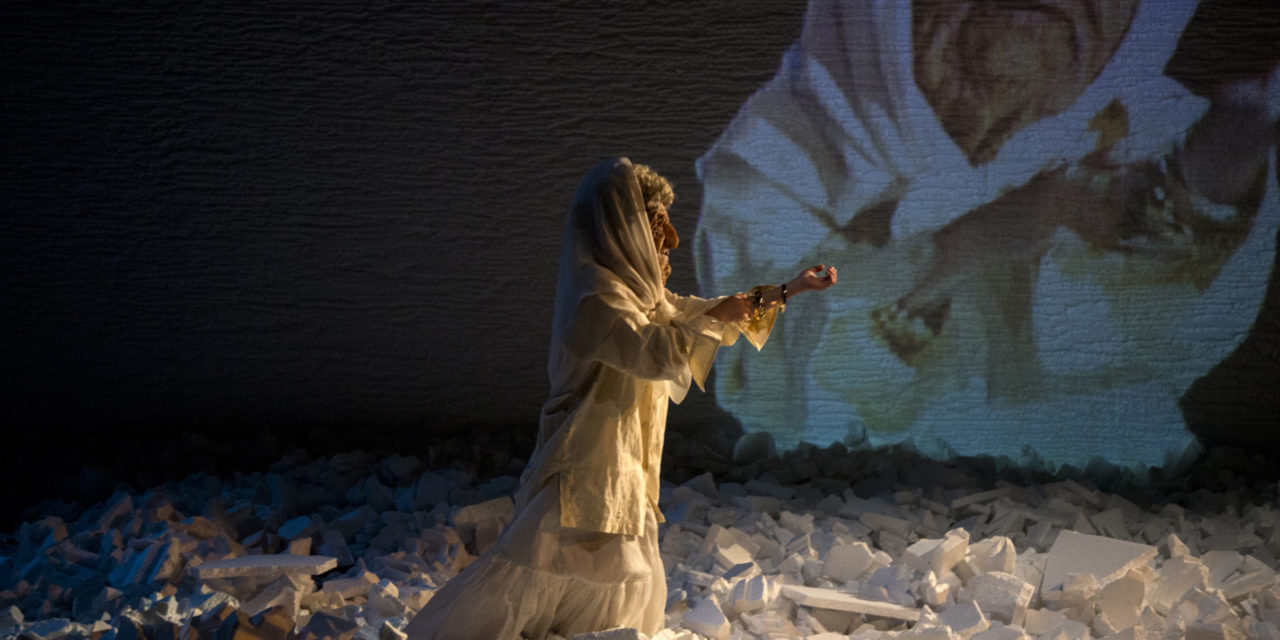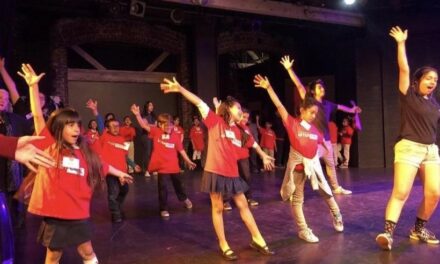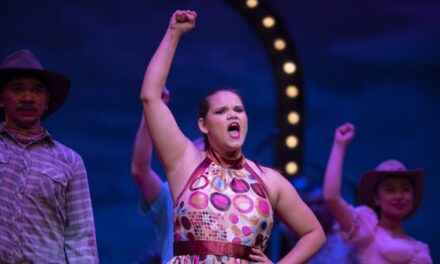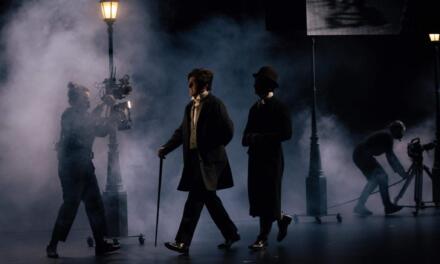Retelling the Biblical Book of Exodus through the eyes of children
The biblical Book of Exodus tells the story of the children of Israel and their liberation from slavery in Egypt. Moses, who as a child is nearly killed, tries to convince the Pharoah to free the Israelites. God sends ten plagues (rivers of blood, plagues of frogs, etc.) to the Egyptians, and Moses leads the Israelites to the desert and freedom, where they receive the Ten Commandments.
Melbourne-based theatre company Fraught Outfit’s retelling of the tale, showing at Theatre Works in Melbourne, opens with a blackout, sudden and total. The lights come up on Kate Davis’s set, a snowy-looking stage covered in ragged pieces of white Styrofoam against a white textured backdrop. The Styrofoam pieces suggest manna, “a fine flaky substance, as fine as frost on the ground”. In the Old Testament, manna is the bread with which God feeds the Israelites during their 40-year journey across the desert. It appears each morning, except on the Sabbath.
The Book of Exodus is the final instalment in Fraught Outfit’s Innocence Trilogy, which includes On the Bodily Education of Young Girls (2013) and The Bacchae (2016). Part I of The Book of Exodus opened this month, with Part II to be staged at Theatre Works in October 2017.
Where the biblical Book of Exodus traces the unification of the Israelites as a people, Fraught Outfit’s production shows children performing and documenting the story at a distant remove. Beautifully executed but sometimes unclear, the show left me reaching for the source text and wondering whether, in so doing, I had walked into a trap.
God commands Moses to preserve a small amount of manna:
throughout your generations, in order that they may see the food with which I fed you in the wilderness, when I brought you out of Egypt.
But aside from this manna saved for remembrance, the Israelites are not to preserve it: each person is to take only as much as they need. Those who try to save the food for the next day (again, except for the Sabbath) find it stinks and gets maggots in it.
Styrofoam is traditionally used in food packaging, a contemporary emblem of having more than we need. Famously non-biodegradable, Styrofoam’s prominence in The Book of Exodus aligns remembrance with forms of waste that imperil our future. Are the children of Israel buried under the airy weight of a command to remember?
Two child performers (Sol Feldman and Tarana Verma in the showing I saw) act out the story. The Styrofoam set is an obstacle, playpen, and resource, and they began the show buried under it. First Feldman and then Verma worked their ways out from under the Styrofoam, dressed respectively as a little old woman and little old man. Rubber masks, wigs, robes, and the bent postures and struggling gaits of the performers showed old age.

Photo: Pia Johnson
As co-creators Adena Jacobs and Aaron Orzech note in the program,
Israel here refers not to a place, but a person: Jacob, the ancestor of those who settled in Egypt, was also known by the name Israel. Therefore his descendants are known as the children of Israel.
Was the little old man Jacob? If so, who was the little old woman? It was not clear. In the Bible, Jacob had children by his two wives, Leah and Rachel, as well as by their handmaidens. During the production, Verma and Feldman assumed multiple gender-blind roles, including those of Moses, his brother Aaron, his mother Jochebed, and Pharaoh at non-sequential ages and stages of the Exodus story.
The non-sequential story expressed through varied forms of children playing —eating lollies off a gingerbread house, playing doctor, bath time with squeak toys — tested my own memory as I tried to identify what parts of the Exodus story were being performed.
The shifting roles also undercut the only part of the biblical Book of Exodus that was read aloud during the performance. While Feldman played with squeak toys in a water-filled Styrofoam cooler — representing, I believe, the plague of frogs — Verma read God’s words to Moses:
Every firstborn in the land of Egypt shall die … so that you may know that the LORD makes a distinction between Egypt and Israel.
To place these words, and God’s injunction to remember, in the mouths of (in this cast, multiracial) children is to confront the audience with their violence. The God of Exodus, Jacobs and Orzech write, is a “parent who hears the groans of their children and responds with an act of deliverance, one which demands the children accept violence as the condition of their liberation.” The Old Testament story repeatedly commands the Israelites to remember this violence.
Child performers draw attention to other forms of direction and remembrance. In one scene, Verma filmed Feldman, directing him to remove his little old woman costume and zooming in and out to frame him as he sat on the floor, painting wounds onto his already-scarred body. Verma then joined him in the wound-painting and bandaged him. The footage was projected onto the white wall behind the children. The scene merged documentation and live performance.
Verma’s work with the camera and both performers’ blocking also emphasized, to a more noticeable degree than if the performers had been adults, that they had been rehearsed and directed. It raised questions about staging this work with children: what did the young performers know and think about the story, and what would they remember?
The Book of Exodus – Part 1 will on at Theatre Works until June 18.
This review was first posted on theconversation.com. Reposted with permission. To read the original review, click here.
This post was written by the author in their personal capacity.The opinions expressed in this article are the author’s own and do not reflect the view of The Theatre Times, their staff or collaborators.
This post was written by Sarah Balkin.
The views expressed here belong to the author and do not necessarily reflect our views and opinions.


















